 | ||
J pop et zengakuren j pop
Zengakuren is a communist/anarchist league of students founded in 1948 in Japan. The word Zengakuren (全学連) is an abridgement of Zen Nihon Gakusei Jichikai Sō Rengō (全日本学生自治会総連合) which literally means “All-Japan League of Student Self-Government.” Notable for organizing protests and marches, Zengakuren has been involved in Japan’s Anti-Red Purge Movement, the Peace Treaty Movement, and opposition to the Korean War in its first stage.
Contents
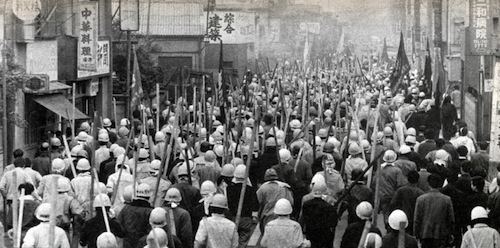
Zengakuren snake dance
History

Although the association was formally organized on September 18, 1948, political movements among Japanese college students can be traced back to much earlier times. While most writers recognize that the student political movement began hand in hand with the spreading labor movement after the First World War, some writers say that this movement is as old as Japanese higher institutions. Akio Iwai, a member of the Japanese Communist Party (JCP) was the first president.
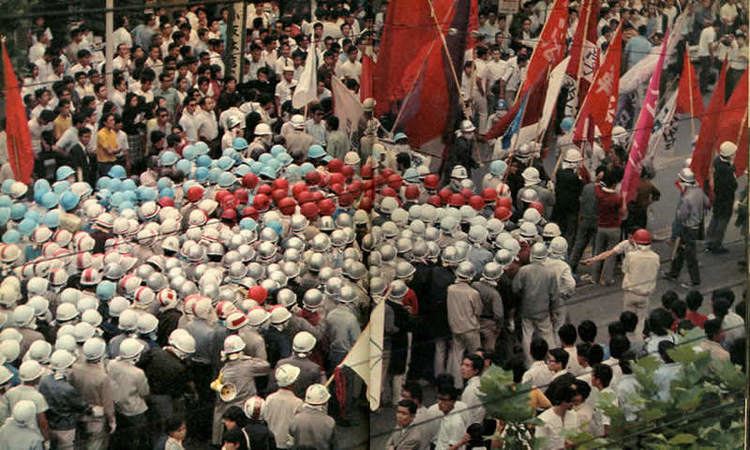
In 1960, the league became divided after activities concerning the revision of the Japan-US Security Treaty. Three tendencies emerged:
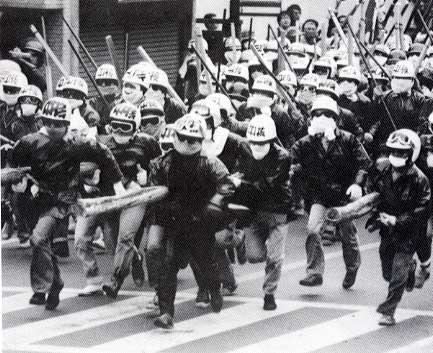
- Minsei: Groups affiliated to the JCP
- Sampo Rengo: An alliance of three factions all critical of the JCP: Japan Revolutionary Communist League, the Japanese Socialist Students League and the Japan League of Socialist Youth
- Marugaku: The Japanese League of Marxist Students consisting of a principle faction (Chukakuha) and a "Revolutionary Marxist" faction (Kakumaru)
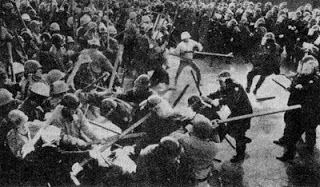
Throughout the 1960s, Zengakuren organizations held protests against the U.S. invasion of Vietnam. In one notable case, U.S. President Dwight D. Eisenhower had planned to visit Japan during a 1960 tour of Asia, but so many Zengakuren turned out to protest at the airport that he decided not to land.
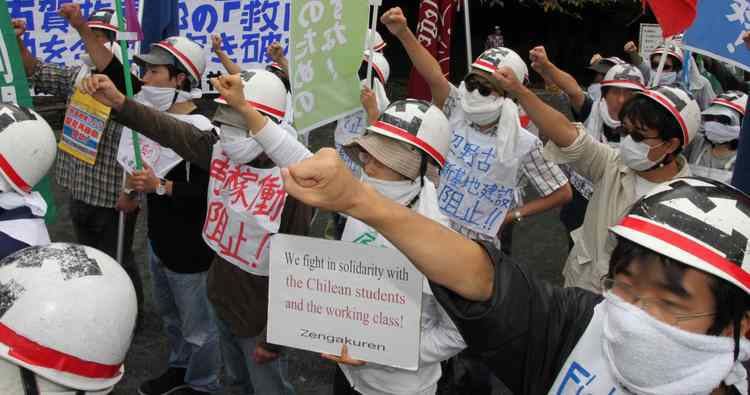
The Zengakuren are discussed by French philosopher Roland Barthes in L’empire des Signes (Empire of Signs) in a section entitled ‘The Writing of Violence.’ Barthes explains:
In our [western] mythology, violence is caught up in the same prejudice as literature or art: we can attribute to it no other function than that of expressing a content, an inwardness, a nature, of which it is the primary, savage, asystematic language...
But in contrast, according to Barthes, the violence of the Zengakuren 'is immediately a sign': expressing nothing'. This violence is intransitive, concerned with creating 'a great scenario of signs', and exhausting itself in its immediate expression.
In 2010 and 2011, Zengakuren groups organized massive rallies and peaceful protests in major cities in Japan.
